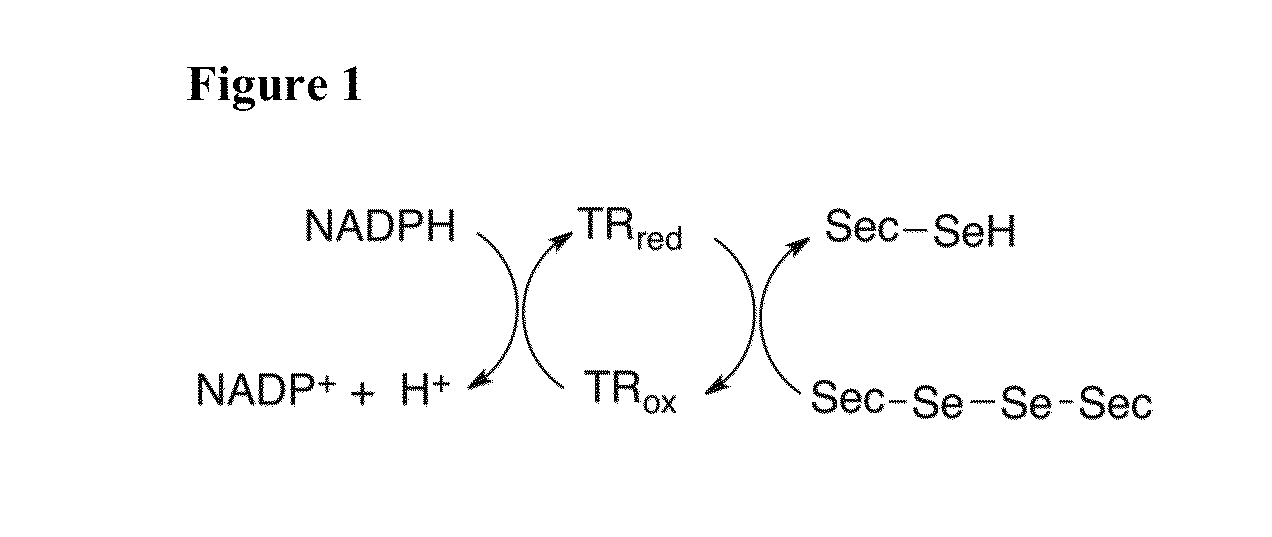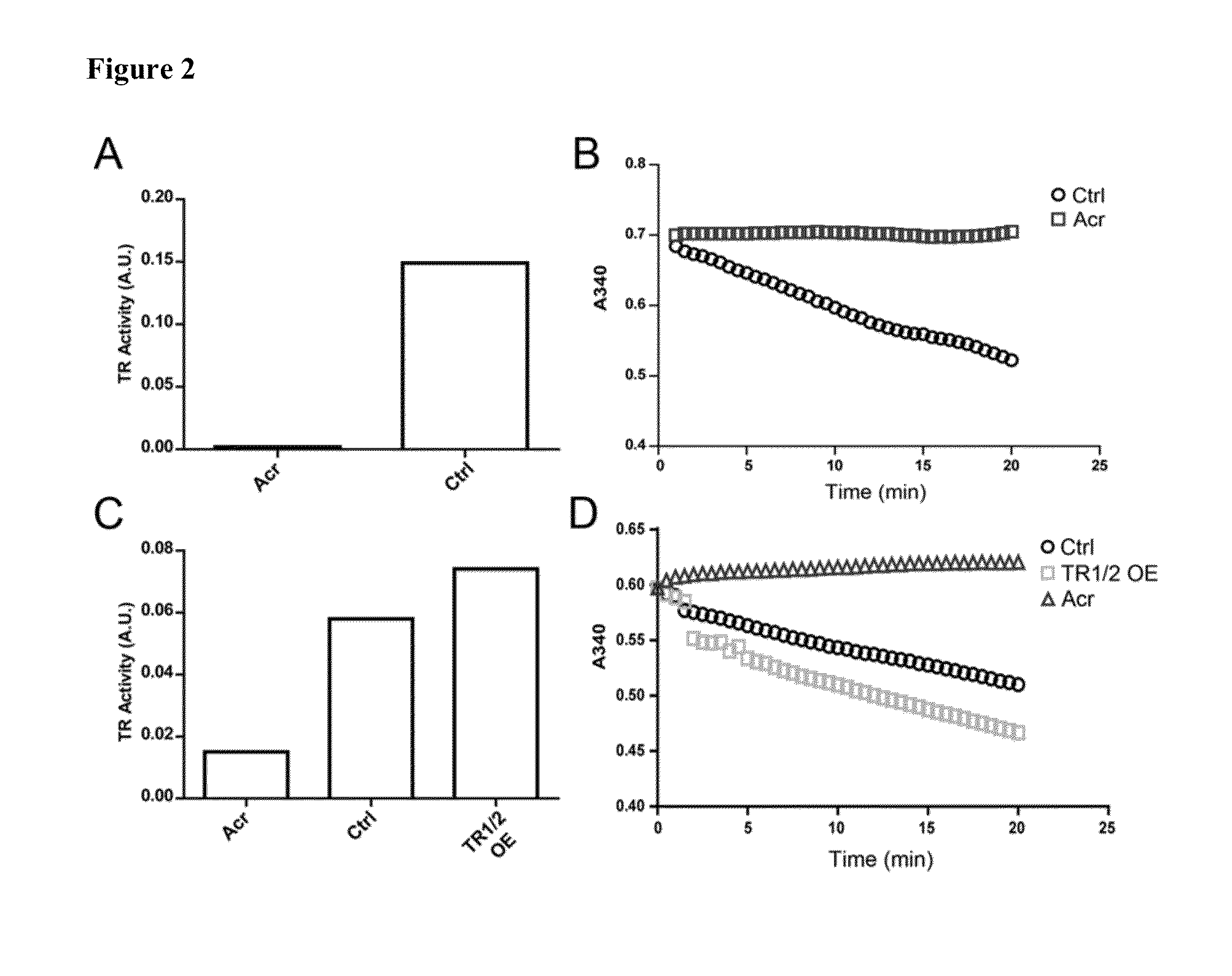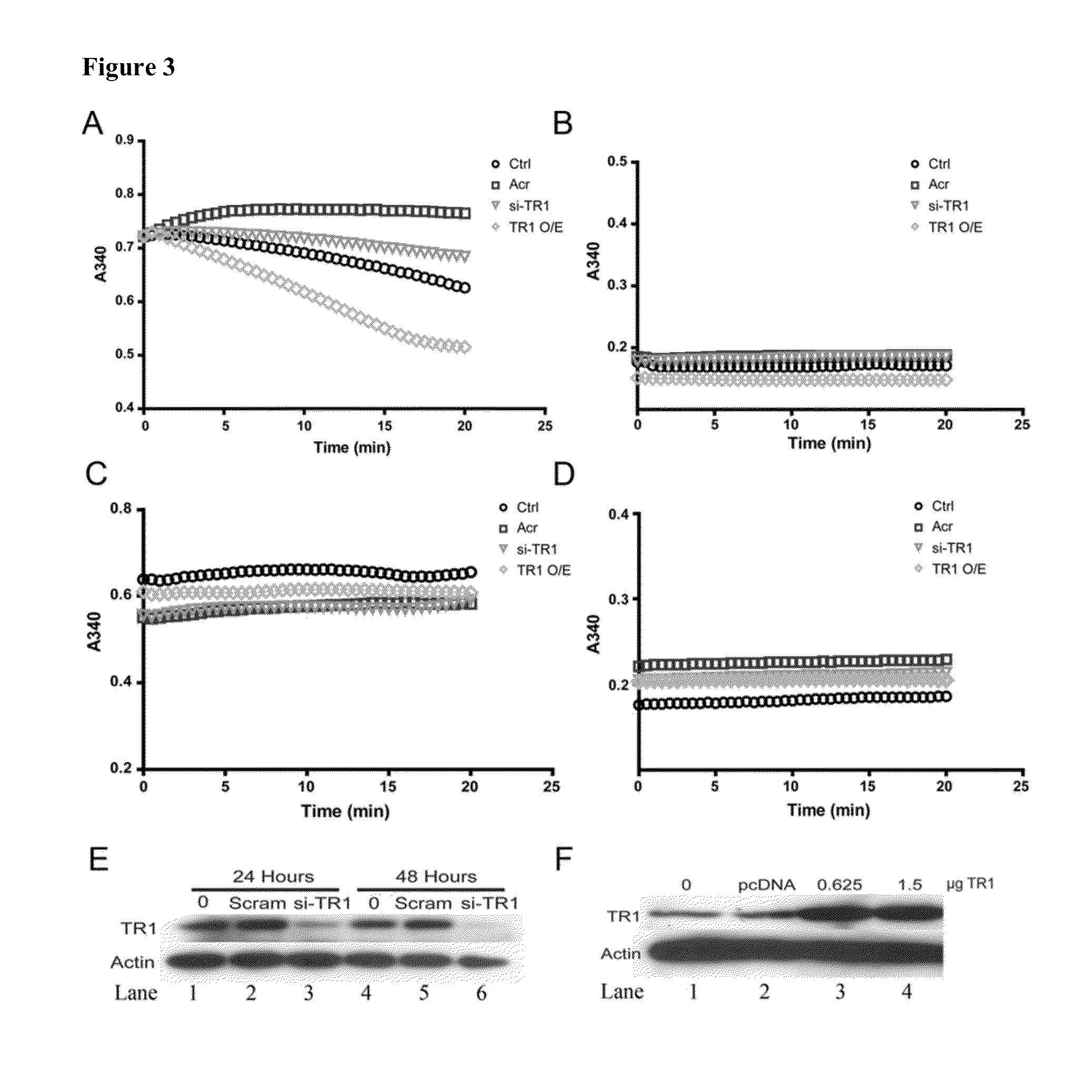Direct assay of thioredoxin reductase activity
a technology of thioredoxin and reductase, which is applied in the field of direct assay of thioredoxin reductase activity, can solve the problems of insufficient quantification of enzyme activity, high cost and time consumption of detection by immunoblotting, and cell-containing nadph oxidoreductase activity, and achieve the effect of inhibiting activity
- Summary
- Abstract
- Description
- Claims
- Application Information
AI Technical Summary
Benefits of technology
Problems solved by technology
Method used
Image
Examples
example 1
Materials and Methods
[0027]Materials. Selenocystine was purchased from Acros Organics (Morris Plains, N.J.). All other reagents were purchased from either Fisher Scientific (Fair Lawn, N.J.) or Sigma-Aldrich (St. Louis, Mo.) and were of reagent grade or better. CMRL and DMEM-F12 cell culture media was from Corning Cellgro (Manassas, Va.). Wild type TR1 plasmid (WT-TR1) was purchased from Ori-Gene (Rockville, Md., SKU: SC107562). TR1 primers were purchased from Integrated DNA Technologies (Coralville, Iowa). TR1 si-RNA was designed and purchased from Dharmacon (Pittsburgh, Pa.). Anti-TR1 antibody was purchased from Santa Cruz Biotechnology, Inc (Dallas, Tex.) and anti-Trx1 antibody was purchased from AbFrontier (Seoul, Korea). Anti-actin antibody, secondary antibodies, and Enhanced Chemiluminescent™ were purchased from Millipore (Billerica, Mass.). Auranofin was a gift from Pamela Cassidy of the University of Utah.
[0028]Preparation of selenocystine solution. L-selenocystine was purch...
PUM
| Property | Measurement | Unit |
|---|---|---|
| molecular weight | aaaaa | aaaaa |
| molecular weight | aaaaa | aaaaa |
| molecular weight | aaaaa | aaaaa |
Abstract
Description
Claims
Application Information
 Login to View More
Login to View More - R&D
- Intellectual Property
- Life Sciences
- Materials
- Tech Scout
- Unparalleled Data Quality
- Higher Quality Content
- 60% Fewer Hallucinations
Browse by: Latest US Patents, China's latest patents, Technical Efficacy Thesaurus, Application Domain, Technology Topic, Popular Technical Reports.
© 2025 PatSnap. All rights reserved.Legal|Privacy policy|Modern Slavery Act Transparency Statement|Sitemap|About US| Contact US: help@patsnap.com



